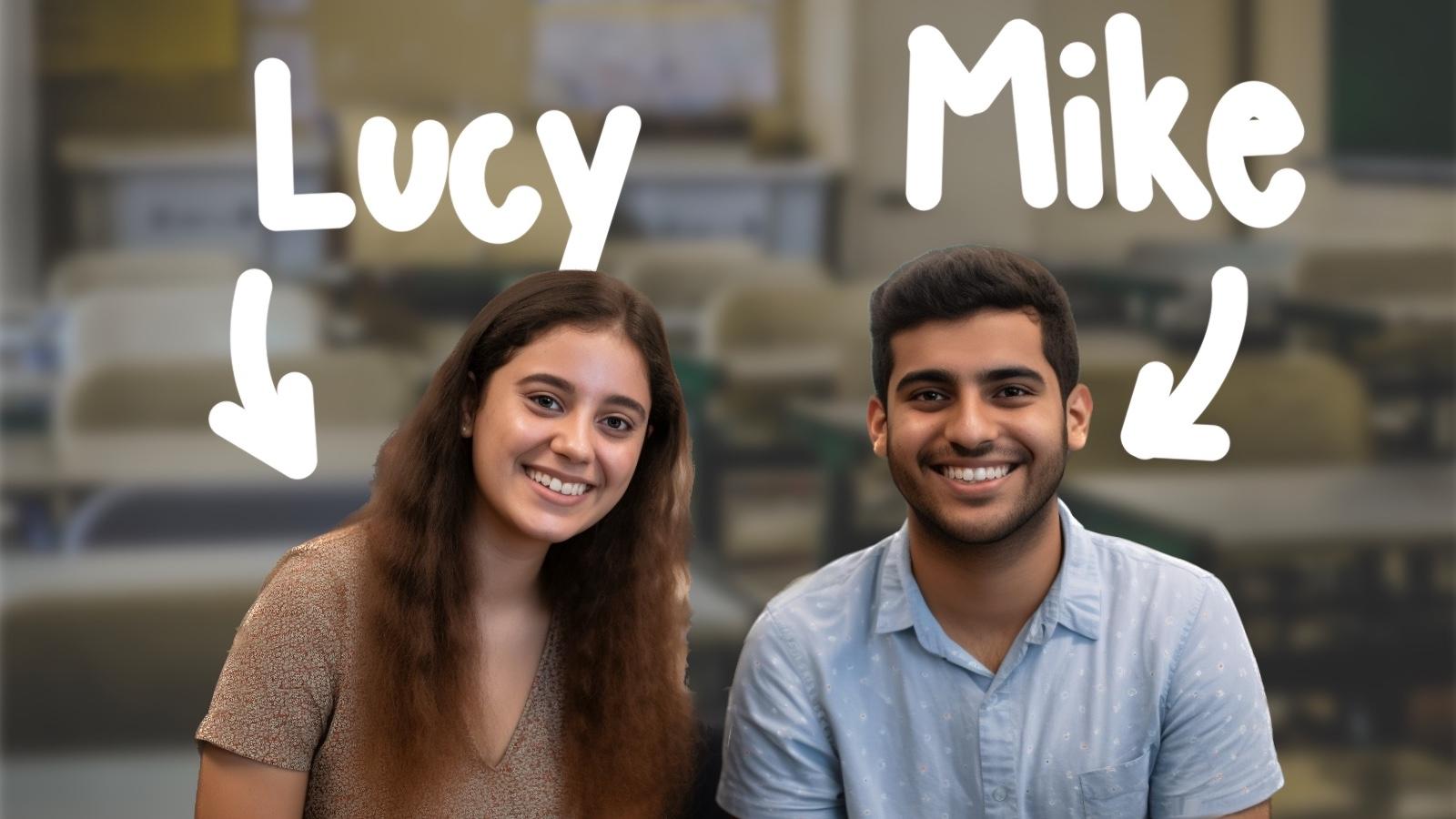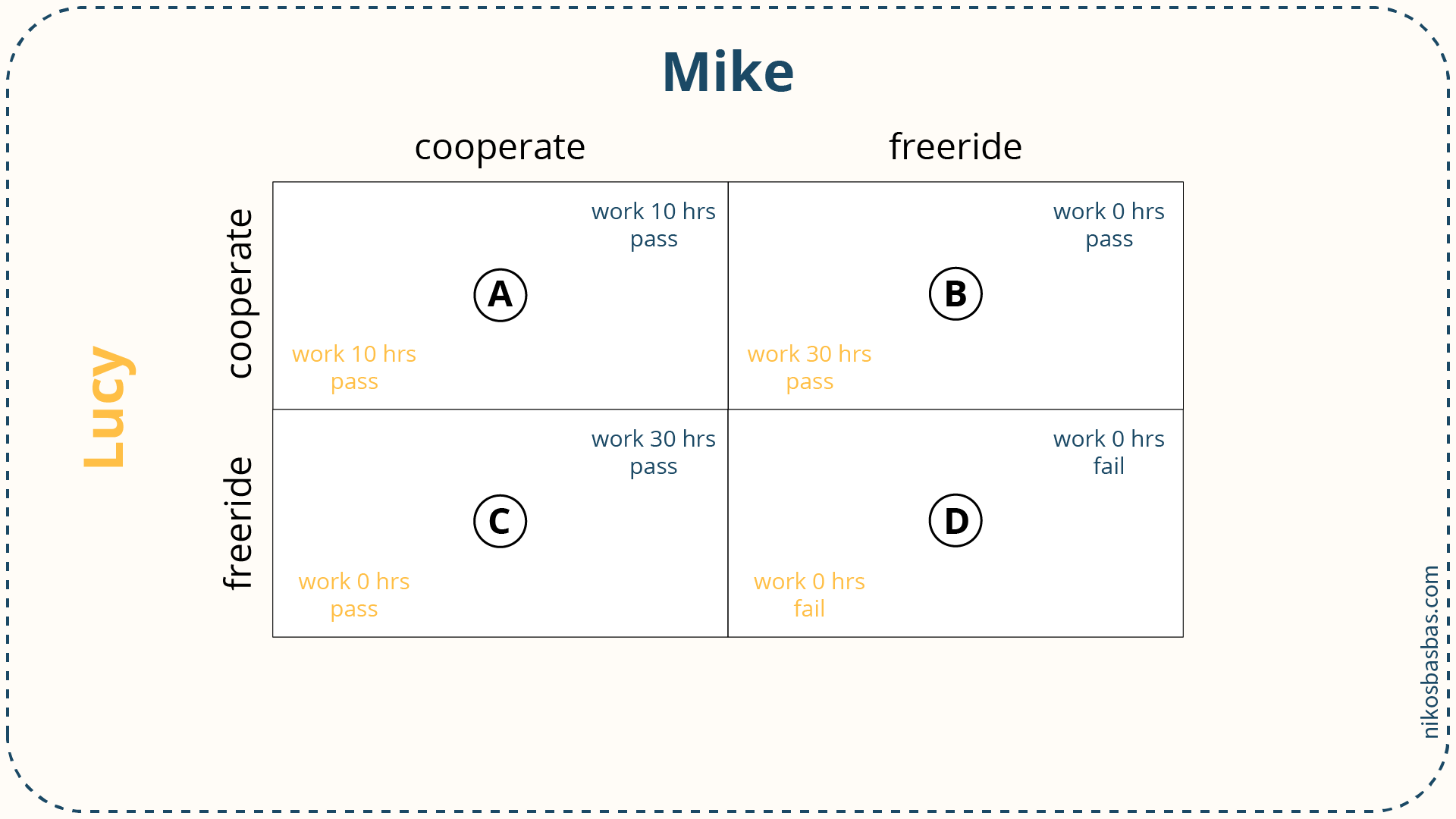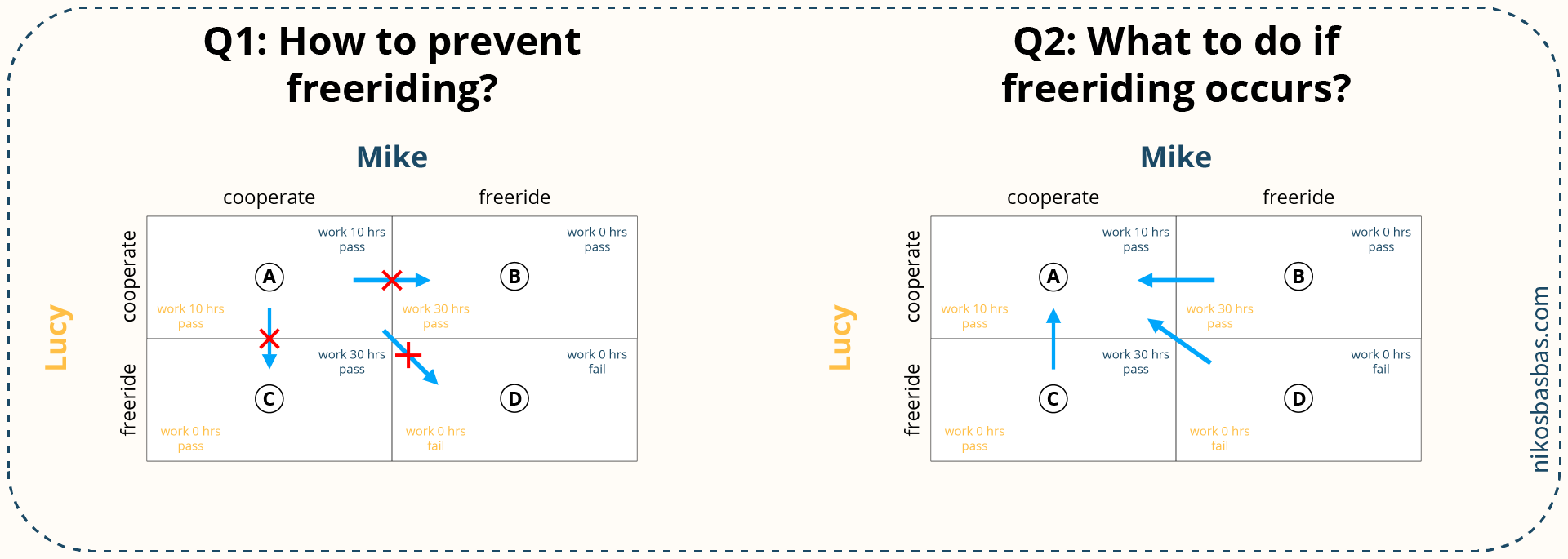Like many other lecturers, I am continuously confronted with the perennial problem of students freeriding in group assignments. But there's no such thing as a free lunch; the sooner students learn this lesson, the better. So, equipped with ChatGPT and elementary knowledge of game theory, I am taking it upon myself to teach it. In this blog post, I am sharing the details of an in-class activity I am going to do with a fresh cohort of students the next semester.
[Me to students in class]:
Ladies and gentlemen welcome to today's lecture, where we'll dive into the topic of freeriding. Ah, yes, the free-rider – a master of academic camouflage during group projects, only to reappear just in time to claim a slice of the success pie.
Now, before any of you get too excited and consider embarking on this seemingly clever path of minimal effort, let's make one thing crystal clear: freeriding is the social equivalent of showing up to a potluck empty-handed and devouring everyone else's dishes. It might seem like a rad strategy at first, but soon enough, you'll find yourself with a one-way ticket to the land of social exile, where the company is scarce and the guilt is abundant.
So, buckle up, as we explore how to prevent freeriding from happening, and if it does, what to do about it. But first, let me introduce you to Mike and Lucy, two university students who find themselves working on a group assignment together.

We'll explore four different scenarios that might play out in the group. Take a look at the image below to get an overview.

Scenario D: Both Mike and Lucy invest zero hours into the assignment, and unsurprisingly, they fail. This scenario is the most tragic because it means they not only fail the assignment, but also the course, and have to retake it the following year.
Scenario C: Lucy freerides, leaving Mike to shoulder the entire workload. Mike must dedicate 30 laborious hours to the assignment, ensuring a pass for both. Lucy is the winner in this story (at least in the short term), and Mike is the sucker.
Scenario B: Technically identical to Scenario C, this time it's Mike freeriding and leaving Lucy to do all the work. Once again, the sucker, in this case, Lucy, bears the brunt of the workload, leading to resentment and perhaps some needlework on a woo-doo doll in the shape of Mike.
Scenario A: Finally, we arrive at the only sensible option. Mike and Lucy cooperate, each investing mere 10 hours of their time into the group assignment (less than half of what it costs one student to deliver the whole assignment thanks to the synergies stemming from collaboration). By combining their skills, they create a masterpiece that earns them a well-deserved pass.
In short, scenario A is the way to go. Now, I want you to discuss two questions:
1. How to prevent freeriding? In other words, how to stay in quadrant A and prevent scenarios B, C, and D from happening?
2. What to do when, despite best efforts, a group member freerides? In other words, how can you revert from scenarios B, C, or D back to A?

Instructions:
1. Form groups of three.
2. To make the discussion easier, I prepared some initial answers to the questions, you can find them in this file.
3. Read and discuss the answers using the following prompts:
-Which ideas do you agree with? Why?
-Which ones do you not agree with? Why?
-Which ideas could be improved? How?
-Which ideas are missing?
4. Note down your thoughts using Track Changes.
5. Once you are done, save your edits, and send the file to me.
Once you are done, we will combine all your suggestions to create an official freeriding policy for this course. Now you have 30 minutes to influence it. Good luck!
So this is my plan for tackling the freeriding problem. What do you think, will it help? I'd be delighted to hear from you on Twitter.
This blog post was produced with help from Midjourney and ChatGPT.
